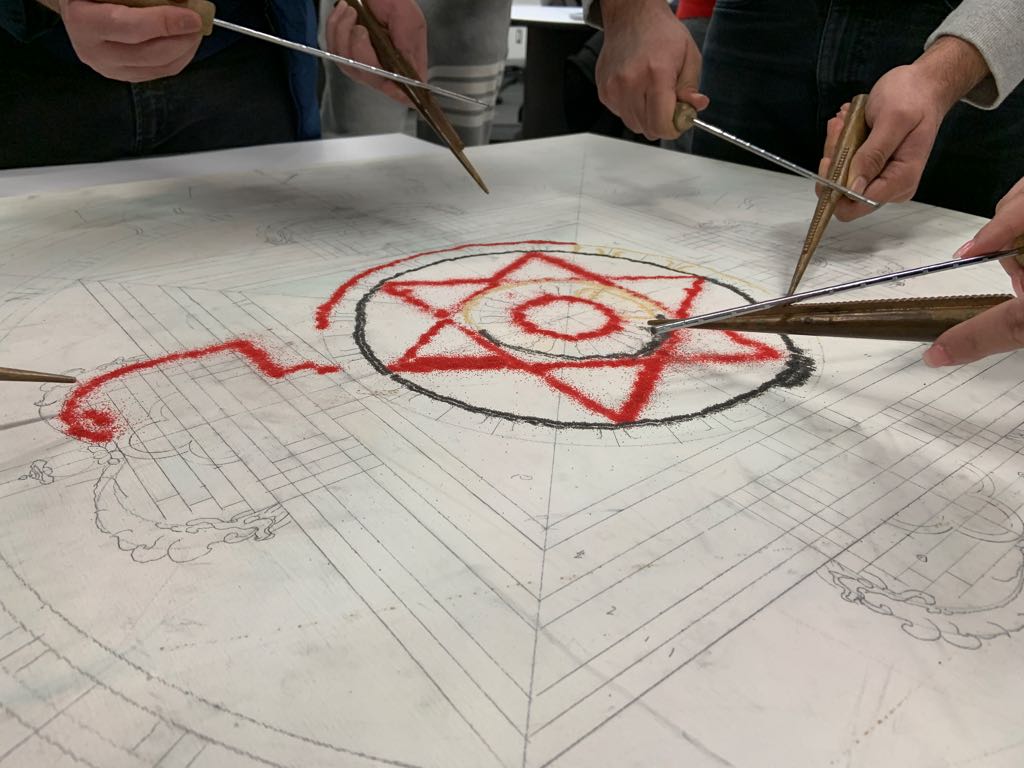Founded in 2019, the Engaging Education in Buddhist Studies (EEBS) initiative supports post-secondary mental health and well-being through evidence-based course design, and it catalyzes relationships through teaching, research, and public communication. Using curricular and co-curricular strategies shaped by principles of collaboration, empowerment, social justice, ethical action, and community connection, EEBS provides deep experiences with scholastic, contemplative, ritual, and therapeutic dimensions of Buddhist cultures. With four domains of activity (teaching, communication, connection, research), EEBS enriches student engagement and public knowledge with an academic framework sensitive to Buddhist communities, cultures, ideas, and histories.
- TEACHING: To support experiential and community-engaged learning opportunities that foster well-being;
- COMMUNICATION: To communicate techniques and lessons learned via academic vehicles, multimedia platforms, and outreach to local and international communities;
- CONNECTION: To catalyze university-community relationships, and to encourage networks focused on peer-supported mental health, well-being, and contemplative science research and practice;
- RESEARCH: To support original research and to study and share the impact of our work.
Primary funding for the EEBS initiative comes from The Khyentse Foundation. Supplemental support has been received from the Robert H.N. Ho Family Foundation Centre for Buddhist Studies, Bukkyo Dendo Kyokai Canada, New College Initiatives Fund, the Buddhism, Psychology, and Mental Health Program, Department for the Study of Religion, School of the Environment, Trinity Sustainability Initiative, eCampusOntario, and others.

Websites featuring EEBS work
- Teaching Buddhist Studies
- Annotated bibliography of print resources plus 241 annotated online resources
- “Teaching Resources for Buddhism, race and racism” project, with video interviews, a database of 300 resources, and a syllabus archive
- Playlist (300 hours) from 2020 conference, Teaching Buddhist Studies
- 2 YouTube channels: @hocentreforbuddhiststudies4808 and @BPMH_UofT
- Other online publications featuring EEBS-supported work include: Windvane | Collective Buddhist Studies Manifesto | EASE Lab | PATH | Women in the Study of Asian Religions | Speaking Our & Listening In
Podcasts supported by EEBS
- “The Circled Square: Teaching Buddhism in Higher Education,” hosted by Sarah Richardson (reaching over 7,000 listeners as of today)
- “Buddhist Studies Footnotes,” hosted by Frances Garrett & Tony Scott (reaching over 6,500 listeners)
- “The Contemplative Science Podcast,” hosted by Mark Miller (reaching over 50,000 listeners)
Open-access articles, essays & news features related to EEBS work
- Forthcoming. Garrett, Frances. “A transdisciplinary approach to teaching Buddhist Studies at the University of Toronto.” In Canadian Journal of Buddhist Studies.
- 2024. Garrett, Frances “Like Rocks and Mountains.” In Contemplative Studies Currents.
- 2024. “Minding your business: A conversation with mindfulness researcher Elli Weisbaum” In The Varsity.
- 2024. “Love on the brain: What can cognitive science teach us about how to better love one another?” In The Varsity.
- 2022. “U of T prof seeks to create a path to well-being.” In University of Toronto News.
- 2021. Garrett, Frances and Sophie Chase. “Deep Listening” in Buddhist Studies: Teaching and Learning during a Pandemic. Religions 12, 387.
- 2021. “U of T prof puts students’ well-being in the syllabus.” In University of Toronto News.
Faculty awards and award nominations for EEBS participants
- 2025 Joan E. Foley Quality of Student Experience Award Winner, Dr. Eleanor Weisbaum
- 2025 Nomination for A&S Teaching Excellence Award, Dr. Eleanor Weisbaum
- 2020 UTM Teaching Excellence Award Winner, Dr. Sarah Richardson

Research, Events, Community Engagement
- PATH (Peers Are There to Help) student mentorship program, supporting students yearly to run weekly programming across campus
- EASE Lab, contemplative science research hub that connects students and faculty across the University, with student fellowships and monthly meetings
- Fellowships for student participation at international conferences
- Teaching Buddhist Studies Fellowships for graduate students
- Community-engaged public events, selected examples:
- Healing Songs Evening of Music, Mediation & Poetry
- Applied Mindfulness Research public forum
- Lecture with Dr Yuria Celidwen, Indigenous Contemplative Science public forum
EEBS-sponsored in-class workshops with guest speakers
- Ryan Genereaux (on movement medicine)
- Reverend Tenku Ruff (on hara breathing)
- Bhante Saranapala (on mindfulness of breath)
- Alice Millington (on inner/outer pollution)
- Geshe Sonam Ngodrup and Venerable Khedrub Tasker (on Indian Buddhist cosmography)
- Reverend Tenku Ruff (on Zen perspectives on nature)
- Bhante Saranapala (on mindful walking and mindfulness meditation)
- Brother Phap Linh
- Brother Phap Luu (on mindfulness in public health)
- Marisela Gomez (on Black Buddhist teachings)
- Kaira Jewel (on Black Buddhist teachings)
- Rory Tasker and Geshe Sonam Ngodrup (on monastic training)
- Master Dao (on Qigong breathing practices)
- Sister Chân Lăng Nghiêm
- Ofosu Jones-Quartey
- Larry Ward and Peggy Ward
- Nho (on race and queer Buddhist practice)
- Melina Bondy (on queer Buddhist practice)
- Sara Ahola Kohut (on critical evaluation of mindfulness research)
- Mark Miller (on predictive processing models, depersonalization, self and non-self)

Teaching modules created for use in different courses
- Torma-making Workshop
- Sand mandala workshop
- Iconometry of the Buddha workshop
- Five-week breath practice series
- Phenomenological writing reflection module
- “Speaking Out and ListeningIn” module
- Buddhist dance, movement and mudras modules
- Reflections on reciprocity through making treasure vases
- Contemplative photography workshop
- Pottery workshop
Print books or websites to celebrate student work
- Books of student poetry printed for several courses
- A website of student poetry and art from different courses
Courses receiving EEBS support
- RLG206 Buddhism
- RLG372 Engaging Tibet
- RLG375 Biohacking Breath
- RLG376 Touching the Earth
- RLG3419 Teaching Buddhism
- RLG2005 Religion & Posthumanism
- JNR301 Histories of Meditation
- BPM214 Socially Engaged Buddhism
- BPM336 Art & Science of Well-being
- BPM338 Exploring Mindful Awareness
- BPM381 Buddhist Perspectives on Current Social Issues
- BPM433 Advanced Exploration of Buddhist Psychology and Practice
- BPM438 Mindfulness Meditation Science & Research
- RLG206 (UTM) Introduction to Buddhism
- RLG373 (UTM) Visuality and Materiality in Buddhism
- RLG201 (UTM) Introduction to Religion in the Visual, Literary and Performing Arts
- RLG370 (UTM) Meditation and Mindfulness
- FAH394 (UTM) Sand, Stone, Gold and Crystal: Materials and Materiality in Asian Art












